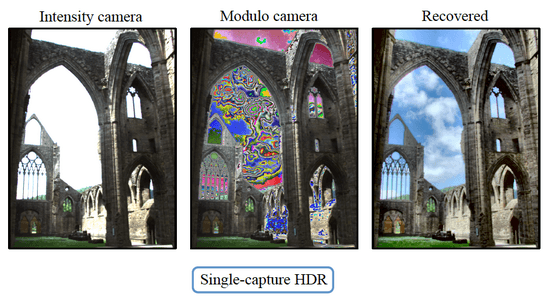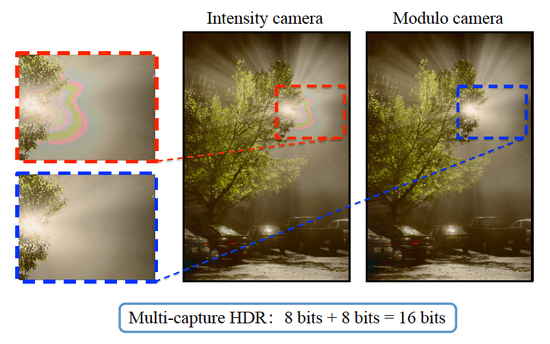Featured Products
Researchers at MIT have created a special camera that will never capture an overexposed photo as part of the “Unbounded High Dynamic Range Photography using a Modulo Camera” project.
A team of researchers from the MIT Lincoln lab, Media Lab Camera Culture, and the Singapore University of Technology and Design have come up with a camera that will be of interest to a lot of photographers.
It is referred to as the Modulo Camera and the whole project has been selected as the runner-up for the best paper at the 2015 International Conference on Computation Photography.
The Modulo Camera is described as the “beginning of the end” for overexposed photos thanks to a technology that captures HDR photos from a single shot.
Modulo Camera captures HDR photos in a single shot
High-contrast scenes are hard to capture on camera in a proper manner. If you are trying to take photos of a beautiful, bright sky, then the buildings or other elements in the scene will turn out too dark. On the other hand, if you attempt to shoot photos in broad daylight, then the buildings might be exposed properly, but the sky will be blown out.
A solution to these problems is called high dynamic range (HDR) photography. It is available in almost all current devices that can capture photos. However, it is hard to take photos of moving subjects because they will turn out blurry. A HDR photo combines three shots at different exposures, so the camera must be steady and the subjects must not move.

How the Modulo Camera fairs in comparison with a regular camera.
Moreover, HDR photos tend to change the saturation and the colors will appear unnatural. As stated above, the solution is coming from a team of researchers, including scientists from MIT, and it is called Unbounded High Dynamic Range Photography using a Modulo Camera.
The Modulo Camera will capture HDR photos from a single shot instead of three. This way, camera shakes will not affect it and the subjects can move freely in the scene.
How does the Modulo Camera work?
Image sensors become full rather quickly in bright light. After receiving a lot of light, they will overflow, so to speak. The researchers have found a way to clear the capacitors when they get full.
According to the paper, the sensor’s capacitors will be reset when they are full. The Modulo Camera algorithm will determine how much light reached the sensor and how many times the capacitors have been reset. After that, the algorithm will determine how much light needs to hit each particular area of a photo.

Modulo Camera takes HDR photography to the next level.
This way, the color accuracy will remain at high standards and the photos will not be overexposed. Eventually, this technology could change the way photographers think and taking photos in broad daylight will no longer be an issue.
Enormous implications in robotic vision
The implications do not end at conventional photography. The researchers are stating that the Modulo Camera could be added into robots, as cameras are their visual inputs. As one would imagine, high contrast affects robotic vision, so this technology may allow robots to see better in the future.
An example consists of driverless cars entering and exiting tunnels. When they enter a tunnel, its vision goes dark, while exiting a tunnel means meeting very bright conditions and going blind. This technology could solve these issues and would be welcomed by car makers.
Everything sounds really promising, but this technology still has a long way to go before being commercially available.






































